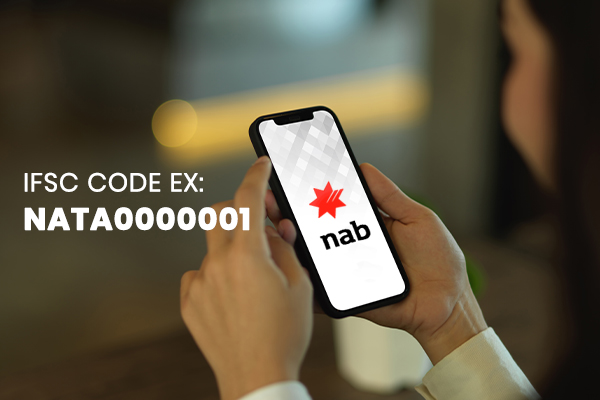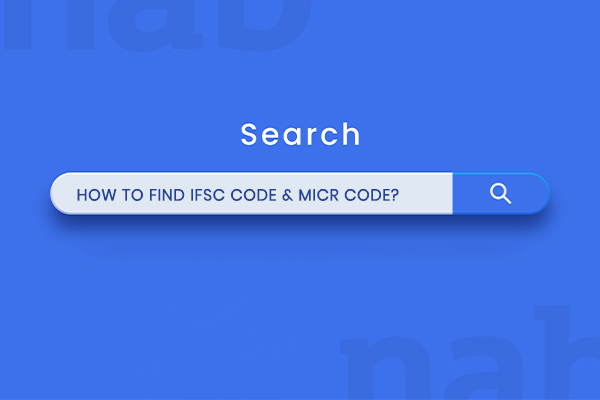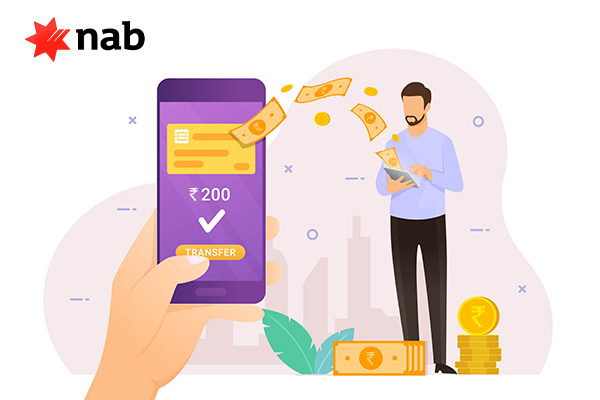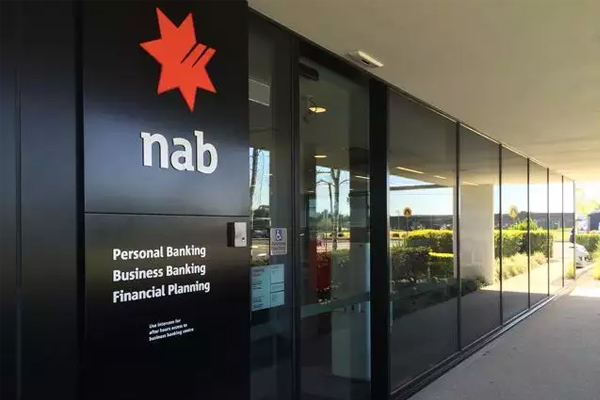 National Australia Bank IFSC Code and MICR Code
National Australia Bank IFSC Code and MICR Code
Find National Australia Bank IFSC Code, MICR Code and branch details for NEFT, RTGS & IMPS transactions.
 National Australia Bank IFSC Code and MICR Code
National Australia Bank IFSC Code and MICR CodeFind National Australia Bank IFSC Code, MICR Code and branch details for NEFT, RTGS & IMPS transactions.
 National Australia Bank IFSC Code Finder - Select Your State
National Australia Bank IFSC Code Finder - Select Your StateThe IFSC code is assigned by the Reserve Bank of India (RBI) to identify the individual branches of every bank in the country. The IFSC code is necessary for online financial transactions. For example, you need the National Australia Bank IFSC Code to send money to an account in that bank.
Internet transactions such as NEFT, IMPS, and RTGS use the IFSC code as a unique identification to send money to the right bank account. The MICR code is also a unique code assigned by the RBI. It helps determine the legitimacy of a cheque and speed up the cheque clearing process.
In this article, we'll talk about the IFSC and MICR codes of the National Australia Bank. We'll also learn the different ways to find the codes and methods to send money online through NEFT, RTGS, and IMPS. Finally, we'll read a little about the National Australia Bank.

IFSC stands for Indian Financial System Code, a coding system developed by RBI to keep track of the branches of banks in India. Every bank and its branches are provided with a unique 11-character alphanumeric code. This code is a combination of the bank code and the branch code.
The first four characters of the IFSC code indicate the branch code. These are followed by 0 and then by the branch code. The branch code can be alphabetical or numerical. For example, the National Australia Bank Mumbai Nariman Point branch IFSC Code is NATA0000001.
In the above IFSC code,
The code has many zeros, and one as the last digit as the National Australia Bank has only one branch in India, which is located in Mumbai.
All this is good. But why do you need to know the IFSC code of a bank branch? The IFSC code is crucial for sending money to a bank account. If you want to initiate an online transaction via NEFT, RTGS, or IMPS, you need to know the IFSC code of the beneficiary.
The IFSC code reduces the risk of error and connects the account number to the respective bank branch. When you use the wrong IFSC code, it might lead to a failed transaction in most instances. The transaction sometimes becomes successful when the account number is correct and has been identified with the right branch.
Knowing the IFSC code is necessary to avoid failed transactions. Your money will not be blocked, and you don't have to wait for it to be deposited back into your account.
MICR is a Magnetic Ink Character Recognition technology used to print unique identification codes on cheques. Similar to the National Australia Bank IFSC Code, the MICR code is also a combination of the bank code and branch code. However, it also includes the city code.
The MICR code has nine digits and is used to speed up ECS (Electronic Clearing Systems), where the cheques are validated and cleared online instead of manually processing them. The MICR code for National Australia Bank is 400728000.
Unlike the IFSC code, you don't need the MICR code for wire transfers. Its sole purpose is to authenticate a cheque and aid in the electronic cheque clearing process.
Some banks also have SWIFT codes that are used for international transactions. Since National Australia Bank is a multinational bank, it has a SWIFT code that facilities wire transfers between accounts in different countries.

We now know the importance of IFSC and MICR codes. But how do we find the codes for online transactions? Luckily, there are different ways to find the IFSC code online and offline. The easiest way is to use the internet.
Online search tools like the Find Your Bank website and app make it easy to find the National Australia Bank IFSC Code at any time and from any location. Follow the below steps to use the Find Your Website.
Open the URL: https://findyourbank.in/
Use the form on the home page to find the IFSC and MICR codes of the required bank branch. You don't have to type anything. Simply use the drop-down option to select details. Remember that the page will refresh itself after entering the selection for each option.
That's it. The relevant branch details, such as the bank name, address, contact information, IFSC code, etc., will be displayed on the screen. You can download the Find Your Bank mobile app from the Play Store if you don't want to use the browser version.
Every account holder is provided with a passbook to track the transactions in their account. The first page of the passbook has information about the bank branch and the account holder. You can find the bank name, branch address and contact information, IFSC, MICR codes, etc. The same page includes the account holder(s) name, account number, address, contact information, user id/ customer id, etc.
The chequebook has the IFSC and MICR codes printed on the first page. Moreover, you can find the codes for individual cheques too. The MICR code is printed at the bottom of the cheque beside the cheque number. The IFSC code is printed at the top of the cheque.
You can find the bank branch's IFSC, MICR, and SWIFT codes by accessing online platforms like the bank website, mobile app, and the RBI website.
As a last resort, you can contact the customer care center of the bank and ask for the codes. You don't need to have an account in the bank to get the codes. The customer care numbers/ email ids can be found on the bank website.

Online money transfer is convenient, fast, and easy. You can send money from one bank account to another at any time and from any location as long as you have an internet connection. There are different ways to send money using online platforms. The bank's website and mobile app help make wire transfers.
NEFT, RTGS, and IMPS are the most used online money transfer methods for domestic purposes. All three transactions require the National Australia Bank IFSC Code of the beneficiary. Let's look at the details required for each type of money transfer and the amount limitations.
National Electronic Fund Transfer is a preferred choice for wire transfer. It is simple, easy, and efficient. The transactions are processed in batches. It takes a couple of hours to deposit the money in the beneficiary's account. NEFT payments are open 24*7*365.
You need the following information to make an NEFT payment:
NEFT payments are accessible from your internet banking account—log in to your account using your customer/ user id to initiate the NEFT payment. There are no restrictions on the minimum and maximum amounts you can send through NEFT. However, the transaction fee is levied based on the amount sent per transaction.
Real-Time Gross Settlement is used to send large amounts of money in real-time. Unlike NEFT transactions, RTGS payments are instant, and you cannot reverse them once the payment is made. People use RTGS payments to transfer huge amounts of money quickly (or for emergencies).
RTGS payments have a minimum limit of Rs. 2 Lakhs. There is no maximum limit. The transaction fee is levied based on the amount sent per transaction.
RBI has waived the processing charges for inward transactions. RTGS transactions require the same details as an NEFT transaction.
You can visit the bank branch to avail of the NEFT and RTGS services if you don't have an internet/ mobile banking facility for your account. You can submit a form to activate your account's internet and mobile banking services.
IMPS is known as Immediate Payment Service. It is a 24*7 service that sends money instantly and can be accessed through internet banking, mobile banking, ATMs, and SMS. The minimum limit for an IMPS transaction is Re. 1, and the maximum limit is Rs. 2 Lakhs. It is secure and hassle-free.
The service charges per transaction vary from one bank to another, though most fall between Rs. 5 to Rs. 25 plus tax. You need the following information to send money through IMPS:

National Australia Bank is one of the four largest banks in Australia with a multinational presence. The bank was founded in 1982 and had its headquarters in Melbourne, Australia. It is a locally-owned public bank with a range of financial services and products to offer to customers.
National Australia Bank has more than 900 branches in Australia, New Zealand, India, China, Japan, Hong Kong, the US, UK, and Singapore. The Indian branch is located at 227 Backbay Reclamation, Nariman Point, Mumbai, Maharashtra.
The bank has more than 32,000 employees and eight million-plus customers. NAB offers personal and business banking services, financial products, instruments, loans, and other relevant services.
National Australia Bank has more than 900 branches around the world. The bank has a presence in Australia, New Zealand, the UK, the US, and Asian countries like India, Japan, China, Singapore, and Hong Kong.
The National Australia Bank is a publicly owned bank. It gets its revenue from offering personal and business banking services, wealth management services, financial products, credit card facilities, loans, nominee services, and fund management services.
The National Bank of Australasia merged with the Commercial Banking Company of Sydney to form NAB. It was called National Commercial Banking Corporation of Australia Limited and later renamed National Australia Bank. Alexander Gibb and Andrew Cruickshank founded the National Bank of Australasia, with whom he raised the bank's capital.
The Swift code of the National Australia Bank is NATAAU3303M. This code belongs to the Trade and International Payments, Melbourne branch in Australia. The Swift code is also known as BIC (Bank Identification/ Identifier Code). The Swift code is an 11-character alphanumeric code that facilitates overseas transactions.